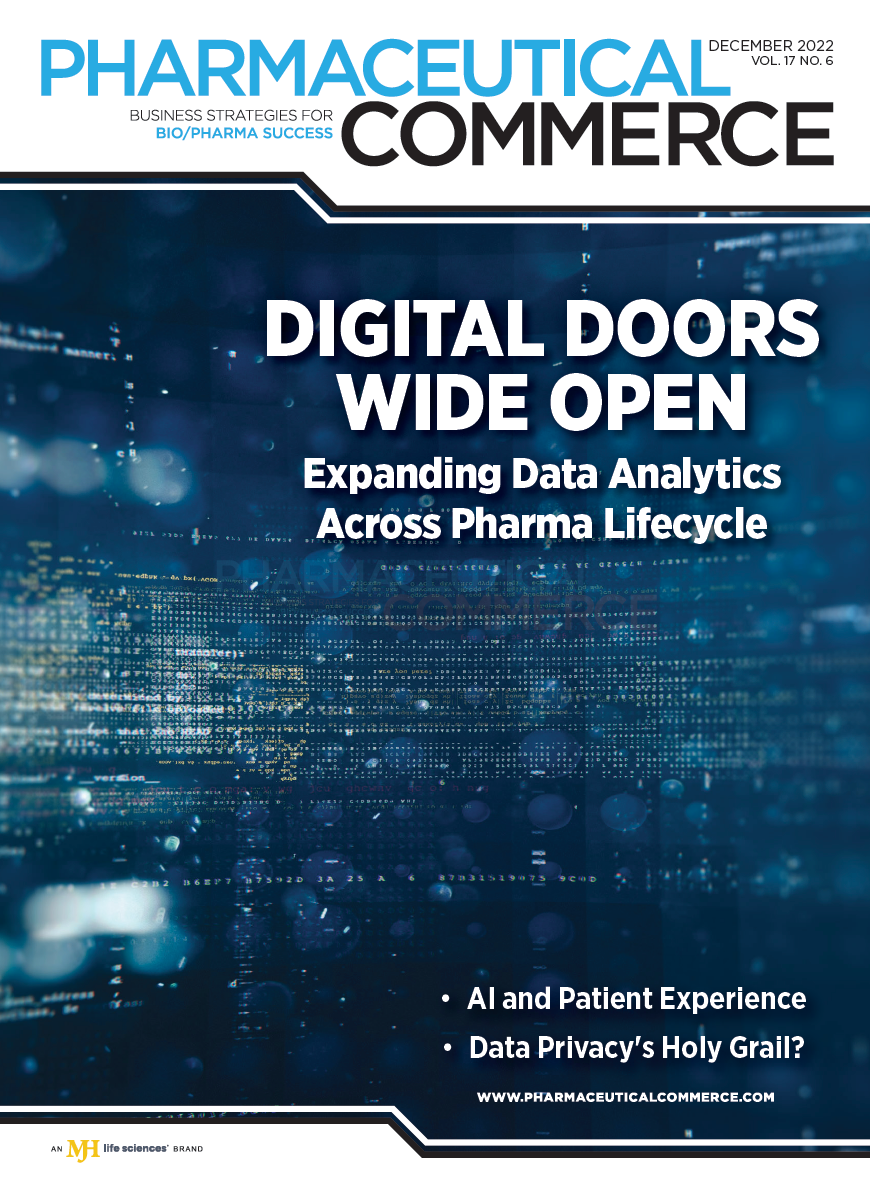'Next-Best-Action' for Data Analytics
How to make commercial AI actionable in the last mile, helping to better realize data science investment and improve customer engagement
Artificial intelligence/machine learning (AI/ML) technologies have become increasingly mainstream in commercial life sciences, particularly in the form of next-best-action (NBA) systems for sales and marketing teams, as well as medical science liaisons (MSLs). The technology has evolved as many innovations evolve, progressing from basic algorithms to well-fueled intelligence engines. Now, NBA solutions represent the new era of data science in drug commercialization.
Along the same trajectory, life sciences companies have made significant investments in their data science teams to develop in-house capabilities. Spending by pharmaceutical manufacturers on data analytics is forecasted to grow by a 27% compound annual growth rate and be worth $1.2 billion by 2030. Between maturing technology from external providers and growing data science capabilities within pharma companies, the industry is betting big on the power of intelligence technologies to improve commercialization.
However, is this substantial AI investment translating into a substantially better customer experience?
Not yet. We have the data and many of the right analytics models, but the resulting insights are not yet achieving the hoped-for improvement in healthcare professional (HCP) experiences with companies. Commercial AI is still experiencing growing pains—and the biggest pain is translating insights into action.
Many of today’s NBA recommendations are not delivered in a format that makes them easy for users to leverage in their daily workflows. Instead, recommendations are either delivered in mass batches at once, poorly timed, or sent without context. Consider this all-too-common scenario: a recommendation to email a physician comes two days after the sales rep has already met with that doctor in person. Such ill-timed recommendations are moot, since it contradicts the sales rep’s instinct not to overwhelm the physician and users can’t act. Even worse, reps start to grow distrustful of a technology that is already unfamiliar to them.
Graham Rapier

Today, internal and external AI resources are converging as early adopters like Genentech, Novartis, and Sanofi are working more closely with technology providers to fill in last-mile gaps and drive meaningful engagements with HCPs that are coordinated across channels and teams. A more refined approach that addresses the last mile first will help organizations turn intelligence into action and get the full return from their considerable AI investments.
Intelligence and data merge
One part of today’s data science revolution is the technology—the AI/ML systems, the algorithms being applied, and the analytics being created. The other part is the data itself. Traditional data sets have included prescription and sales data, pharmacy and medical claims data, and activity reports generated by field sales teams. Now, additional data sources, drawn from social media, mobile phone usage, and online activity add new dimensions to what can be fed into the analytical systems. The NBA suggestions that emerge from these systems are the “intelligence” guide commercial teams.
Consider, as examples, how pooling these data sources can generate answers to questions like these:
- Which physician is most in need of a personal visit soon, based on queries each has been making on brand websites?
- How can I arrange my day’s calls to make the best use of my time across my territory?
- Of a variety of benefits that can be promoted for a brand, which ones are most significant at this time, given the relative trends of that brand and its competitors?
- What changes in messaging should accompany a price change of a brand (a company’s or competitor's)?
- How vital is having reimbursement and copay information, along with resources, for this physician at this time?
With all the various data sources available, it is not difficult today for NBA systems to generate many recommendations—too many, even. In fact, the number of NBA suggestions can paralyze users if those insights aren’t prioritized based on the individual user needs, territories, past engagement, and other real-world considerations. Advanced intelligence technology can serve as a curator or traffic cop for NBA recommendation, ranking them based on various criteria and parceling them out to users in palatable chunks while also doing a one-for-one accounting of results. NBA recommendations must be contextually logical to individual users so that they will act.
In this way, advanced NBA solutions address the last mile—first. Proven algorithms are incorporated into the systems during the initial solution implementation process to ensure that recommendations are provided to users in a format and timeline that makes it easy for them to act on. For example, delivering each recommendation in a workflow that makes action just one or two clicks away. In addition, the solution should take into consideration actions being taken with each HCP by other people in the organization so that customer engagement is well orchestrated. If, for instance, an HCP has just been sent a promotional email from the brand marketing team, a well-orchestrated recommendation would trigger a rep to follow up a few days later through the HCP's preferred channel.
The final stretch of this last-mile solution must also include a mechanism for user feedback. If users do not have any way to provide a reason for ignoring a recommendation, it can frustrate them. On the other hand, if users can easily provide fast feedback, then the engine will adapt, perform better, and instill greater confidence in its recommendations for a continuous improvement loop. This is a benefit particularly important in the life sciences industry, where things change quickly: new people, performance goals, territories, doctors. Nothing is static, and AI is particularly adept at managing change in real time.
Case study: Getting AI right in real life
One top-20 US-based biotech company is an innovator in leveraging data analytics for commercialization. The company came to Aktana shortly after it switched to a new CRM system. The switchover gave it the opportunity to better organize its salesforce data, which was combined with other sources to kickstart its NBA program. After the initial buildout for four therapeutic areas, the biotech began to add new therapeutic areas monthly; the company now has a total of eight.
The biotech, known for creating the first medicine for primary progressive multiple sclerosis, has reported positive experience with the NBA program and its sales representatives anecdotally reported improved customer engagement as a result of the suggestions. Further, by solving the last-mile challenge, more than 70% of the company’s sales representatives are actively using the system, exceeding initial benchmarks. Generally, Aktana customers see a 22% increase in priority HCP coverage and frequency, a 20% reduction in time spent pre-call planning, and 60% to 80% adoption of NBA tools.
Driving behavioral change
By far, the most critical step of implementing a successful NBA program is driving internal behavioral change. Part of that responsibility falls on technology providers who need to take the time to understand corporate culture, commercial operations, and the people who will use the system. It is eminently possible to “soft launch” the solution, first by integrating existing sales call planning, then incorporating HCP-specific data such as channel preferences, and finally optimizing for omnichannel journeys and higher-level analytics.
Even as life sciences companies invest in internal data science capabilities, they struggle to solve for the last-mile challenge: the key to building user trust and improving customer experiences. It’s not an either/or decision, but rather, a mix of both an internally developed AI model and an open platform that can incorporate all data and AI models while making insights more palatable to users so they can translate easily into action.
About the Author
Graham Rapier is the Vice President of Enterprise Accounts at Aktana.
